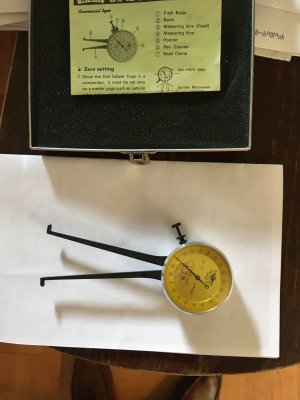I have found measuring an ID is way less precise than measuring an OD. I have used my calipers, and snap gages followed with calipers or micrometer. I can reliably get within .005", but not the .001" I can with OD.
I guess folks will use a gage pin set to do better. I do not have a set.
BUT, I do have an (economy) set of gage blocks. So, I have clamped two of them together with a small parallel clamp, twisted them in the calipers to measure the diagonal (the nicely chamfered edges ensures the Pythagorean Theorem doesn't work), and slide them into the hole to be measured.
I guess I am mis-treating the edges of the gage blocks, but, this approach seems to be a frugal path to better ID measurement.
Is this a standard hack? Any reason not to use? Any other suggestions for better ID measurement?
Thanks.
Cordially,
Bill
I guess folks will use a gage pin set to do better. I do not have a set.
BUT, I do have an (economy) set of gage blocks. So, I have clamped two of them together with a small parallel clamp, twisted them in the calipers to measure the diagonal (the nicely chamfered edges ensures the Pythagorean Theorem doesn't work), and slide them into the hole to be measured.
I guess I am mis-treating the edges of the gage blocks, but, this approach seems to be a frugal path to better ID measurement.
Is this a standard hack? Any reason not to use? Any other suggestions for better ID measurement?
Thanks.
Cordially,
Bill



